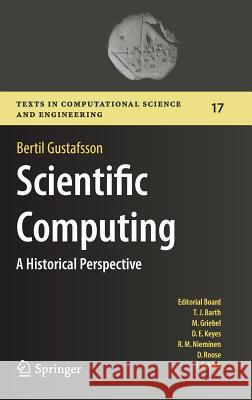Scientific Computing: A Historical Perspective » książka
topmenu
Scientific Computing: A Historical Perspective
ISBN-13: 9783319698465 / Angielski / Twarda / 2018 / 262 str.
Kategorie:
Kategorie BISAC:
Wydawca:
Springer
Seria wydawnicza:
Język:
Angielski
ISBN-13:
9783319698465
Rok wydania:
2018
Wydanie:
2018
Numer serii:
000308055
Ilość stron:
262
Waga:
0.56 kg
Wymiary:
23.39 x 15.6 x 1.75
Oprawa:
Twarda
Wolumenów:
01
Dodatkowe informacje:
Wydanie ilustrowane











